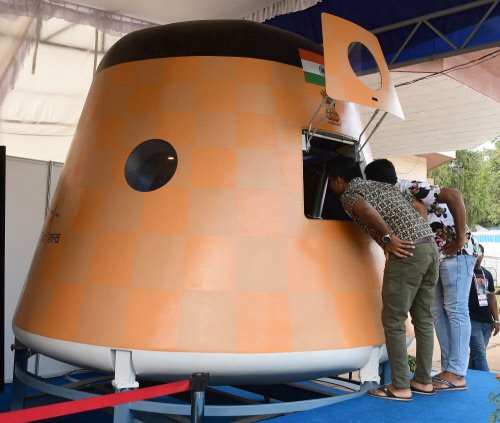The first abort test using the special test vehicle (TV) part of #Gaganyaan, which was earlier targeted for the last quarter of this calendar year, is now expected only in early 2023.
ISRO chairman S Somanath told:
“There’s been a lot of progress & at this juncture we're looking at the
first test in early 2023. The test vehicle is already at SHAR (spaceport in
Sriharikota) and work on the crew module (CM) and crew escape system (CES) is
progressing.
As reported earlier, the test —
TV technology demonstrator-1 (TV-TD1) mission — will demonstrate the descent
phase, parachute deployment and recovery, among other things.
While there will be more than one
TV-TDs, in the first one, the CM will separate from the TV at a height of
around 11km (from sea level), attain an altitude of around 15km before falling
back to back in the Bay of Bengal.
The Sriharikota ground team will
track. Once separated or ejected from TV, CM will have a free fall.
Essentially, will demonstrate crew escape system in an in-flight abort scenario
— that is, navigation & guidance, control systems and parachutes will be
demonstrated.
“We’re getting ready for the
first TV launch, which should happen mostly in the 2nd or 3rd week of January
as things stand now. CES is almost ready with most motors having been tested.
The CM will take some time as there are many systems involved,” a senior
scientist said.
The full-scale CM will have a
simulated mass of the actual module ISRO plans to send astronauts in. While
this will not carry the environment control and life support system (ECLSS),
the weight will be simulated.
Further, another scientist
explained that the training of the four astronaut-elects is continuing in
Bengaluru even as the space agency makes headway in procurement of various
simulators needed for the next level of training.
“We need two or three virtual
reality (VR) simulators of which we have one. We also need a mock-up simulator
that gives trainees the feel of the actual CM with all the interiors mimicking
the real module For this simulator, we’re in final stages of placing an order.
It’ll most likely be an Indian firm. Other than this, we also need a dynamic
training simulator (DTS),” the scientist said.
As reported earlier, ISRO
recently floated a tender for a dynamic training simulator and is awaiting
responses from companies.
As per the EoI, vendors will
develop simulator for ISRO, which will among other things develop & supply
simulation software, configuration of CM interior, mission sequence, &
carry out review of design and realisation of systems.
Any new IP created during
simulator devp will be shared by vendor & ISRO. DTS will be essential for
mission-specific training (MST) which’ll be supported by various crew training
simulators (CTS), including this one.

Comments
Post a Comment